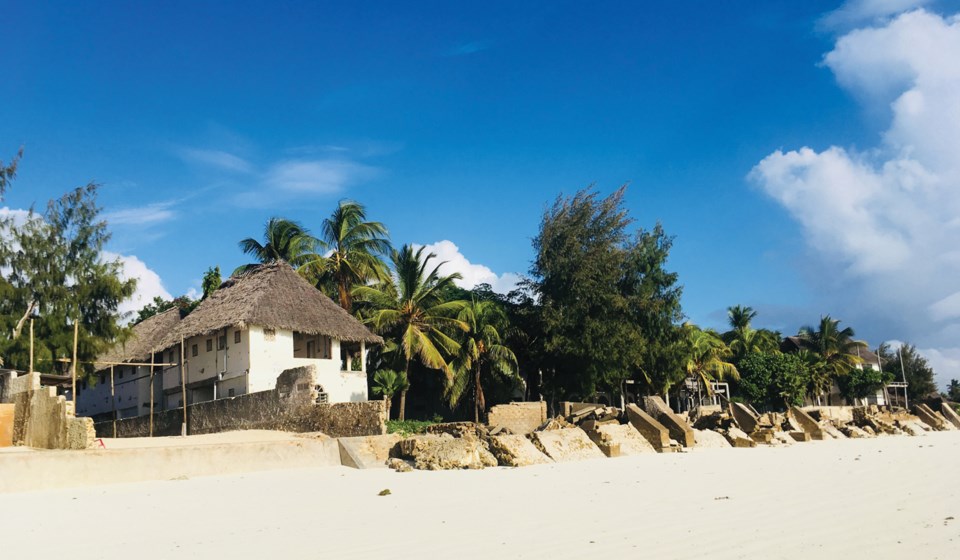Far east from the chill waters on the Skeleton Coast of Namibia where I swam a month ago is the island of Zanzibar and a very different sea – the Indian Ocean. It looks as warm as it is turquoise green. We hear the surf day and night as it breaks on the island’s barrier reef. Inside the reef, a lagoon stretches north south. At low tide, women work their seaweed farms. They wade waist deep, fully clad in colourful Islamic dress while fishermen sail by in dugout canoes.
The phrase we hear everywhere to describe life here is “hakuna matata” (no worries). It may turn out to mean ignore your worries or there is no point in worrying – Zanzibar has its problems, but they are all part of our discoveries and its ongoing story.
The first surprise after the prerequisite mysteries of luggage transfer is a $50 US entrance visa to Tanzania, which this historic spice island is part of. History has it Arab and Indian residents were driven out in 1963 but the island continues to absorb some cultural flux as Europeans take over opportunities in tourism. Our hotel, staff tell us, is one of the few to be truly locally owned and operated. It is colourful, comfortable and we needed a good sleep after our in-flight excursion of East Africa.
We woke to short light rain shower and were soon on our way to investigate columns of smoke rising along the beach. The sand is soft on our feet as we walk. Fishermen are working palm frond fires in and around canoes that are beached for repairs. It hardens the wood, they tell us.
As the tide rises, the local folk retire to the call of prayers or the shade of their huts. We take a swim and the water is as gloriously warm as the colours promised.
As idyllic as all this sounds, the local people live in rough coral stone huts; rusted tin roofing dominates in the villages. Farms lack electricity, running water and tin roofs. Mud huts and poverty are everywhere and real. We are told wages of those with jobs equals around $4 per day. As this is the off-season for tourism, almost everything is a “special deal.” Our room cost 1.32 million shillings for eight days – not expensive. We have five security guards at night; they currently outnumber the guests. The hotel restaurant seats 70, but we may eat alone. The pool is clean and empty.
The threat of endless rains is unfounded as yet. We did note damage from previous cyclones; it can be seen in several buildings left unrepaired along the waterfront.
The road into this village is unmaintained, broken coral and rough to a fault. There are no clean, new Shell stations – fuel is bought as required for the ride from pumps marked PETROL. Vehicles are generally old and passed down from the ex-Japanese market. Police checks are frequent but we have no idea why because apart from frequent horn use, and staying mainly to the left, the rules of the road are incomprehensible. We travel by taxi.
Alcohol is not sold on the premises. No beer, martinis are out, G&T hasn’t a hope. Booze may be had and indeed must be had as the Russians and Italians arrive in droves every December. We suspect nearby beach hut restaurants sell anything you could want and more than you need.
Tomorrow will tell more, bring new words to learn in Swahili and new puzzles to solve. That’s the ongoing adventure. Hakuna matata.



